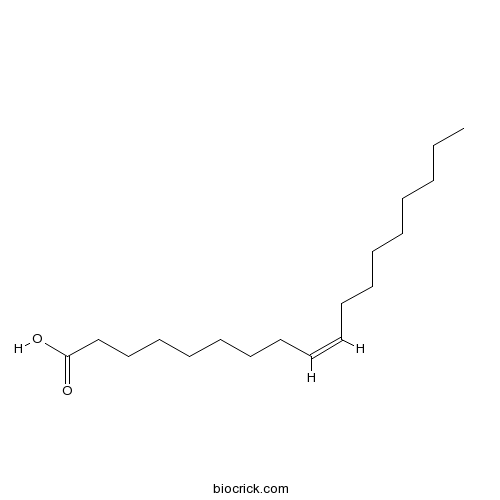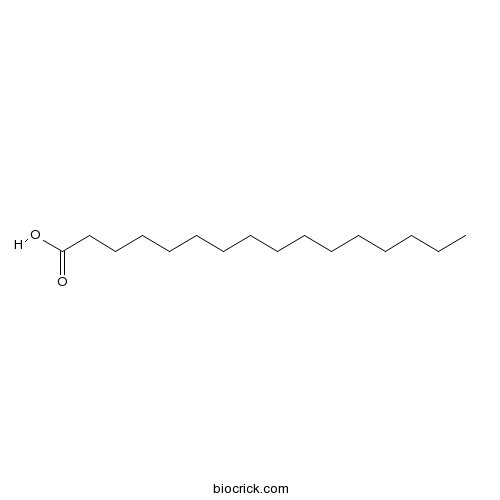Camellia oleifera
Camellia oleifera
1. The products in our compound library are selected from thousands of unique natural products; 2. It has the characteristics of diverse structure, diverse sources and wide coverage of activities; 3. Provide information on the activity of products from major journals, patents and research reports around the world, providing theoretical direction and research basis for further research and screening; 4. Free combination according to the type, source, target and disease of natural product; 5. The compound powder is placed in a covered tube and then discharged into a 10 x 10 cryostat; 6. Transport in ice pack or dry ice pack. Please store it at -20 °C as soon as possible after receiving the product, and use it as soon as possible after opening.
Natural products/compounds from Camellia oleifera
- Cat.No. Product Name CAS Number COA
-
BCN7159
Oleic acid112-80-1
Instructions

-
BCN1206
Palmitic acid57-10-3
Instructions

Deep eutectic solvents used as extraction solvent for the determination of flavonoids from Camellia oleifera flowers by high-performance liquid chromatography.[Pubmed: 30033674]
Camellia oleifera flowers are rich in flavonoids, but there has been little attention on their application. A simple and reliable method for determining the content of flavonoids in C. oleifera flowers would be very helpful for the utilisation of agriculture resources.
Camellia Oil ( Camellia oleifera Abel.) Modifies the Composition of Gut Microbiota and Alleviates Acetic Acid-Induced Colitis in Rats.[Pubmed: 29895146]
Ulcerative colitis (UC), one type of chronic inflammatory bowel disease (IBD), is a chronic and recurrent disorder of the gastrointestinal (GI) tract. As camellia oil (CO) is traditionally used to treat GI disorders, this study investigated the role of CO on acetic acid-induced colitis in the rat. The composition of the gut microbial community is related to many diseases; thus, this study also investigated the effects of CO on the composition of the gut microbiota. The rats were fed a dose of 2 mL/kg body weight CO, olive oil (OO), or soybean oil (SO) once a day for 20 days, and the gut microbiota was analyzed using 16S rRNA gene sequencing. Results of the gut microbiota examination showed significant clustering of feces after treatment with CO and OO; however, individual differences with OO varied considerably. Compared to SO and OO, the intake of CO increased the ratio of Firmicutes/Bacteroidetes, the α-diversity, relative abundance of the Bifidobacterium, and reduced Prevotella of the gut microbiota. On day 21, colitis was induced by a single transrectal administration of 2 mL of 4% acetic acid. However, pretreatment of rats with CO or OO for 24 days slightly enhanced antioxidant and antioxidant enzyme activities and significantly reduced inflammatory damage and lipid peroxidation, thus ameliorating acetic acid-induced colitis. These results indicated that CO was better able to ameliorate impairment of the antioxidant system induced by acetic acid compared to OO and SO, which may have been due to CO modifying the composition of the gut microbiota or CO being a rich source of phytochemicals.
Anatomical structure of Camellia oleifera shell.[Pubmed: 29868989]
The main product of Camellia oleifera is edible oil made from the seeds, but huge quantities of agro-waste are produced in the form of shells. The primary components of C. oleifera fruit shell are cellulose, hemicellulose, and lignin, which probably make it a good eco-friendly non-wood material. Understanding the structure of the shell is however a prerequisite to making full use of it. The anatomical structure of C. oleifera fruit shells was investigated from macroscopic to ultrastructural scale by stereoscopic, optical, and scanning electron microscopy. The main cell morphology in the different parts of the shell was observed and measured using the tissue segregation method. The density of the cross section of the shell was also obtained using an X-ray CT scanner to check the change in texture. The C. oleifera fruit pericarp was made up of exocarp, mesocarp, and endocarp. The main types of exocarp cells were stone cells, spiral vessels, and parenchyma cells. The mesocarp accounted for most of the shell and consisted of parenchyma, tracheids, and some stone cells. The endocarp was basically made up of cells with a thickened cell wall that were modified tracheid or parenchyma cells with secondary wall thickening. The most important ultrastructure in these cells was the pits in the cell wall of stone and vessel cells that give the shell a conducting, mechanical, and protective role. The density of the shell gradually decreased from exocarp to endocarp. Tracheid cells are one of the main cell types in the shell, but their low slenderness (length to width) ratio makes them unsuitable for the manufacture of paper. Further research should be conducted on composite shell-plastic panels (or other reinforced materials) to make better use of this agro-waste.
Chemical Constituents of the Seed Cake of Camellia oleifera and Their Antioxidant and Antimelanogenic Activities.[Pubmed: 29763975]
None
Hypoglycemic activity in vitro of polysaccharides from Camellia oleifera Abel. seed cake.[Pubmed: 29654860]
We isolated and purified polysaccharide from the Camellia oleifera Abel. seed cake (CCP) and studied its hypoglycemic activity in vitro. The molecular weight of CCP was 4736 Da and the monosaccharide molar composition ratio was: Xylose:Glucuronic acid:Galactosamine:Mannose = 10.9:4.4:2.6:1.8. The CCP contained conjugated proteins and belonged to acidic polysaccharide, which can promote the consumption of the glucose in the medium by HepG2 cells within the range of 0.125-0.500 mg/mL. Relative consumption rate (RCR) of the glucose was the highest at 0.5 mg/mL, exceeded that of the metformin hydrochloride, as well as that of Tea Polysaccharide under the same concentration. A meaningful structure activity relationship (SAR) of hypoglycemia polysaccharides had established. This result suggests that CCP can be used as hypoglycemic medicine or health food.
Neuroprotective Effects of the Nanoparticles of Zinc Sapogenin from Seeds of Camellia oleifera.[Pubmed: 29648429]
The sapogenin isolated from seeds of Camellia oleifera shows central effects in our previous research. Aiming to improve its neuroprotective effects, we synthesize the zinc-sapogenin complex, which has been found with the nanoparticle characters and neuroprotective effects. Its structure is deduced as sapogenin:zinc:water (3:1:1) by ultraviolet spectra, infrared spectra, element analysis, and thermogravimetric analysis. The average size of zinc-sapogenin is 115 nm with plane circular shape by measurement of particle analyzer and scanning electron microscope. The nanoparticle improves DPPH radical scavenging activity due to the enhancement of electron transfer among atoms through the linkage of zinc with the sapogenin. Intraperitoneal injection of zinc-sapogenin reduced mice behavioral disorder and neuron damage induced by neurotoxicity of rotenone, increased antioxidative ability and promoted the neurotransmitters of dopamine and acetylcholine in mice brain. Zinc strengthens stability and effects of the sapogenin, and it is a superior candidate of drugs for neuroprotection without accumulation in brain.


